The 350 is either a lot newer than you think it is or a lot older. I say that because there are some people who assume it’s been around “forever”, and some who think it’s “only” a couple of decades old. Well, it’s neither!
The very first 350s appeared in 1983–over forty years ago! And the basic idea just makes sense: a small bodied semi-hollowbody like the 325, but full scale. It’s actually a little surprising that it didn’t exist earlier. That said, despite solid sales over its lifetime, it doesn’t sit “top of mind” for most people when thinking about Rickenbackers. Which is odd, because there’s plenty of them out there, they’re not terribly expensive, they’re light and very comfortable to play, and they do everything you’d expect a Rickenbacker to do. I’d argue that 350s are slept on!
1983
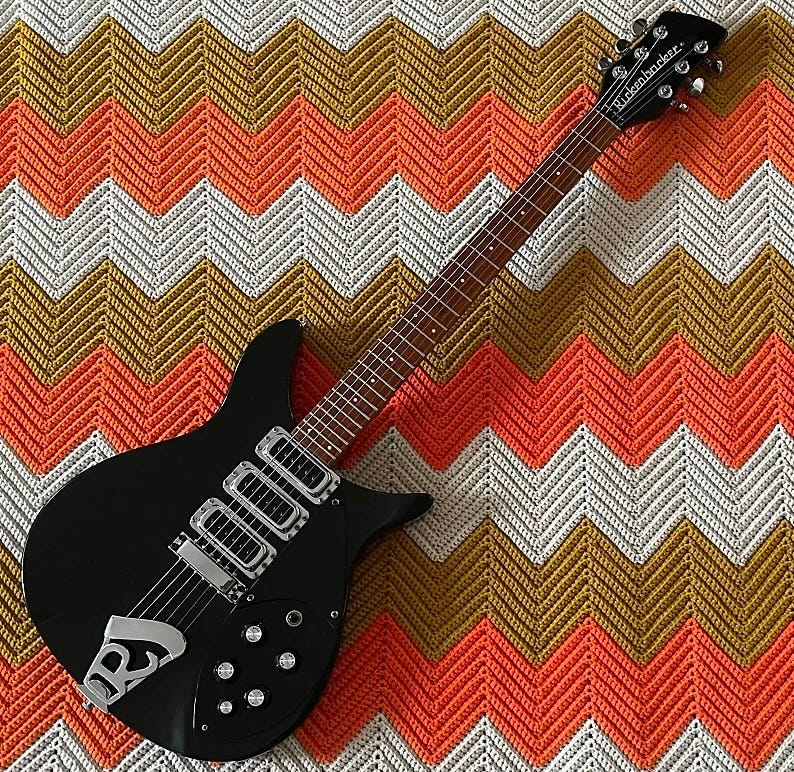
When the 350 Liverpool appeared Rickenbacker attempted to “rebrand” the small-bodied guitars with the “Liverpool” moniker to take advantage of a certain association. Price lists and marketing materials refer to BOTH the 320 and 350 as “Liverpools” around this time, although the name wasn’t applied to reissue/vintage 325 models.
When launched, the 350 Liverpool had a 1 piece 24 fret neck with maple headstock wings, 3 Higain pickups, and an R tailpiece. Oddly enough, given the intended John Lennon/Liverpool association, while the first production 350s came only in Jetglo they were equipped with black plastics.
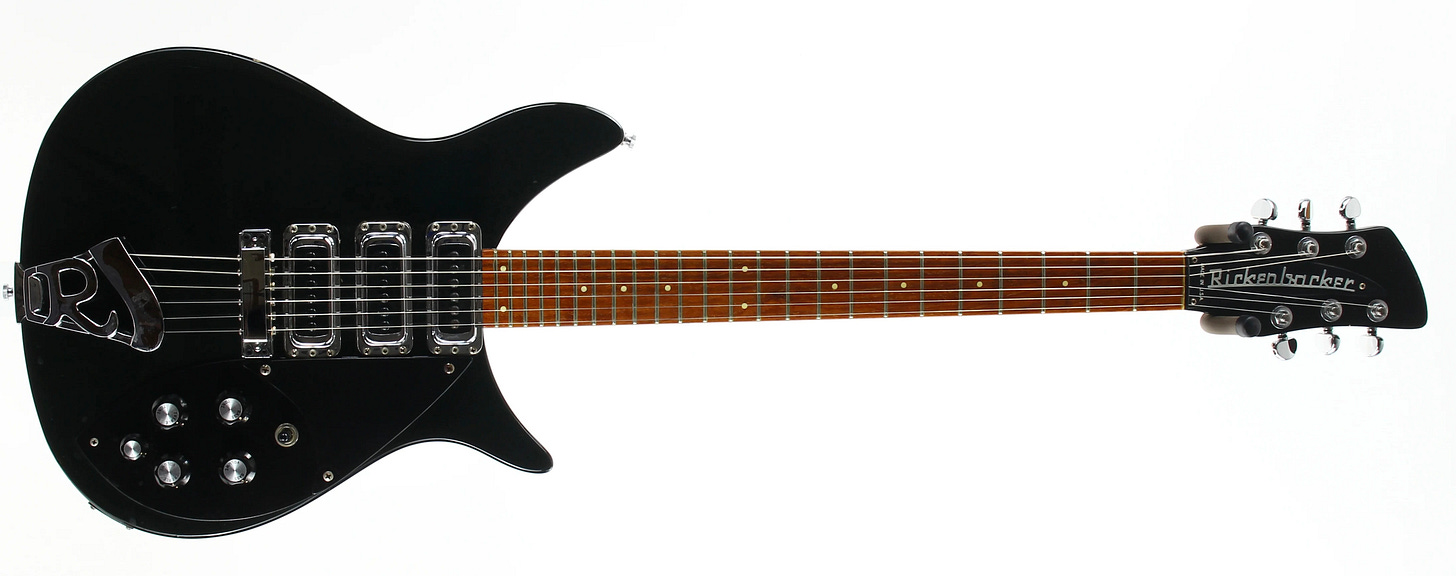
Being from the period between Kluson’s closure and the beginning of the Schaller era with its paddle headstock, these first 350s had a skinny “vintage” headstock but with Grover Rotomatic tuners—an odd look today!
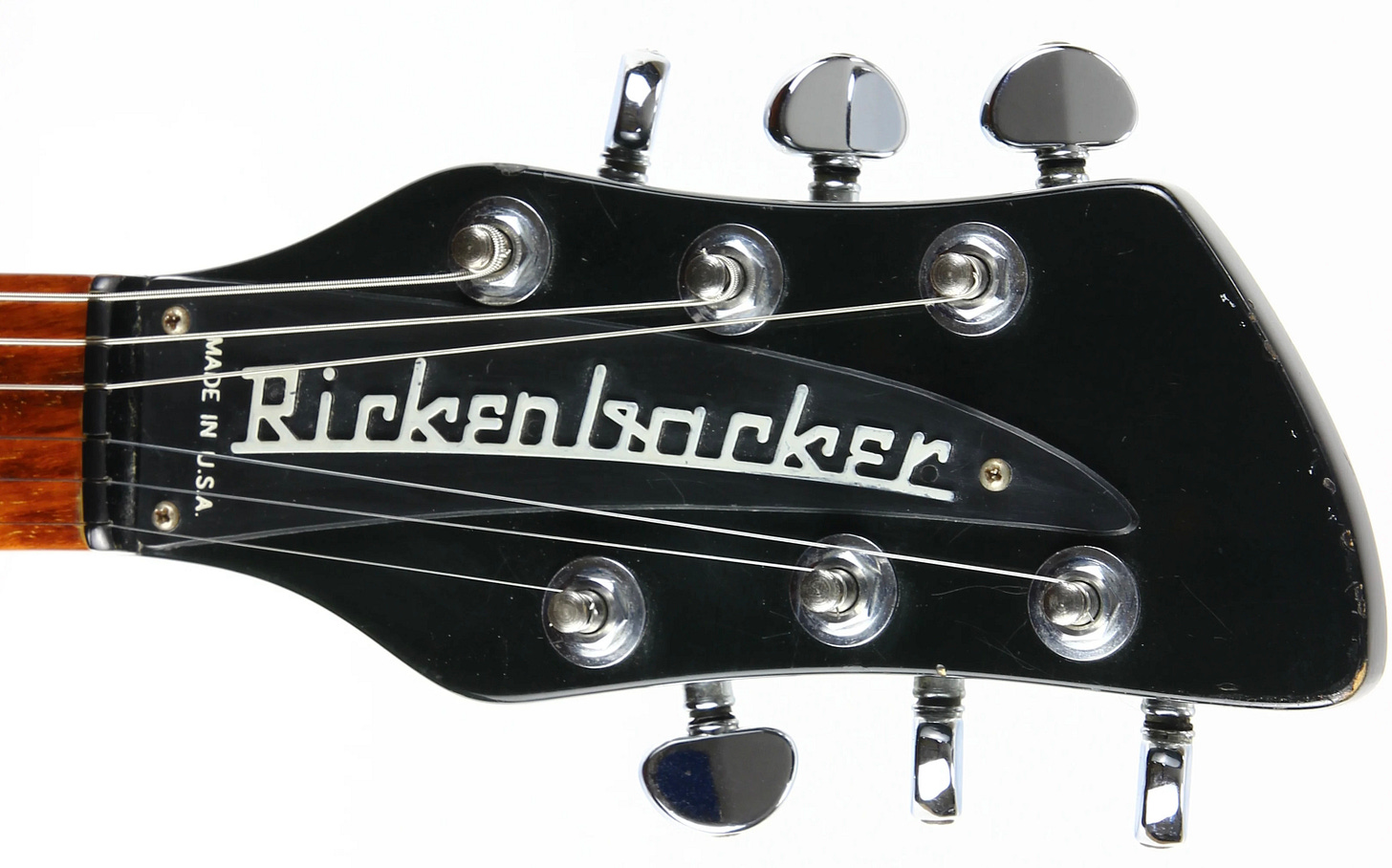
1984
A major change impacted the entire Rickenbacker guitar line, including the 350: an updated bridge design. The locking nut that had held the saddle adjustment screws in place since the bridge was developed in the 1950s was removed and replaced with a spring behind the saddle to achieve the same end. This slimmed down bridge would become the default on all models in January.
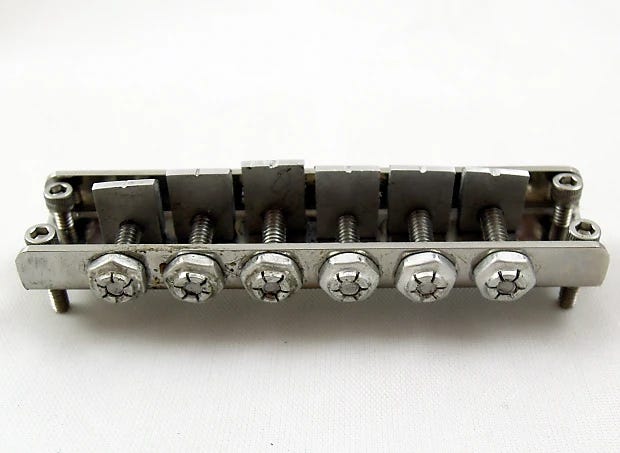
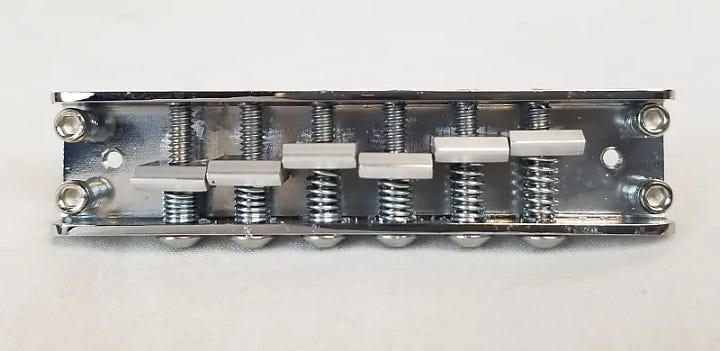
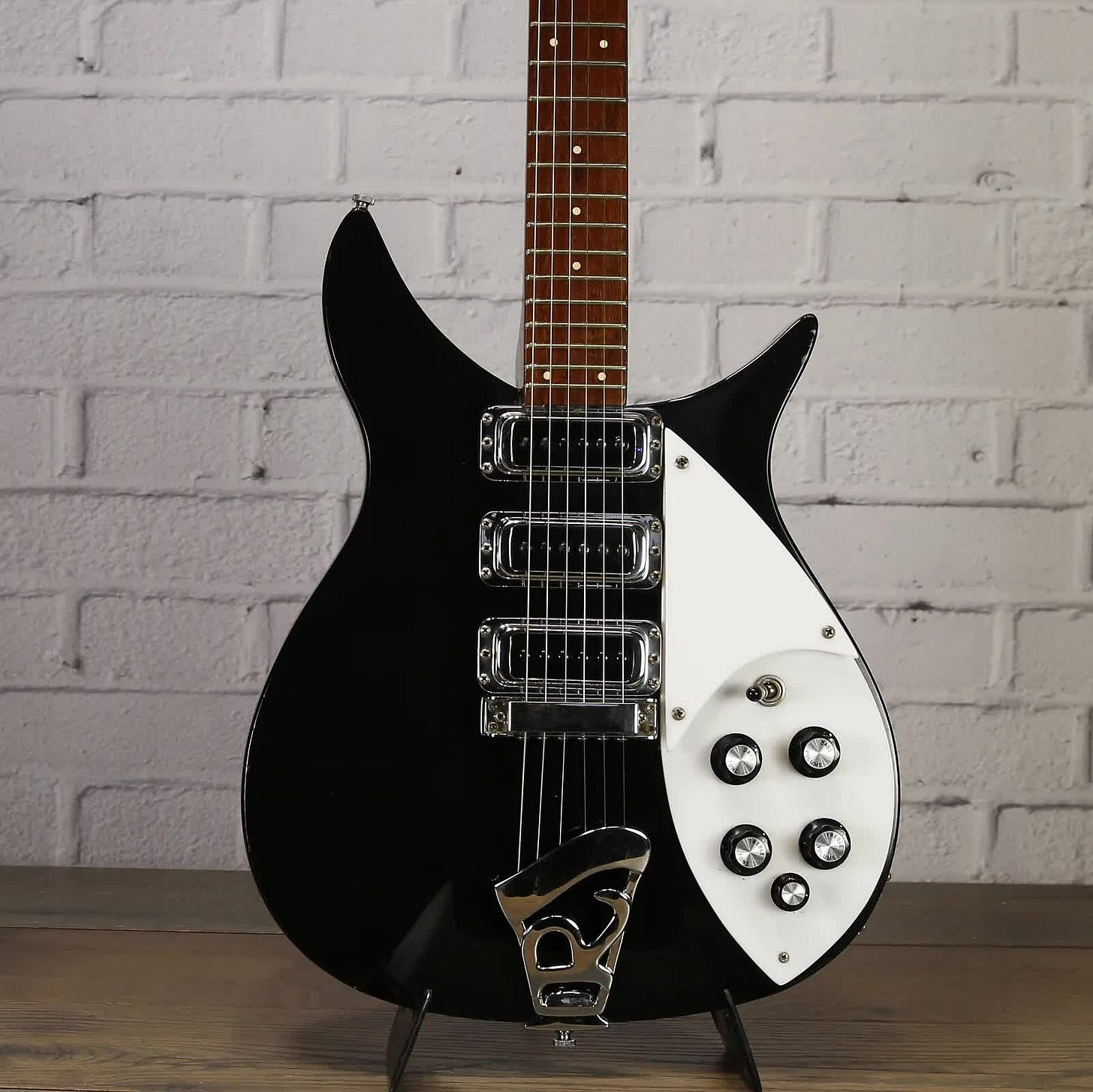
For 1984, the 350 got closer to its Liverpool inspiration by replacing the black plastics with white. All other details were the same as 1983–including Jetglo being the only color option—until…
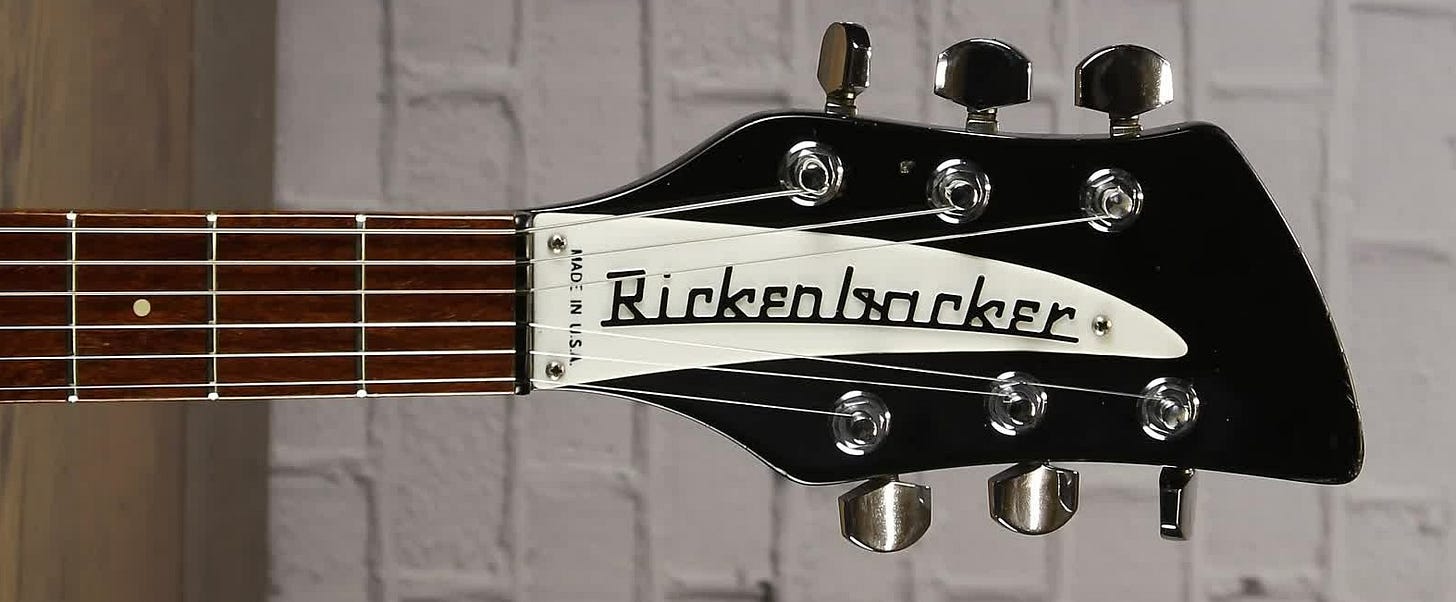
…the introduction of Schaller M6 mini tuners and the accompanying paddle headstock. Very briefly: the bushings on the Schaller tuners were so large that they could interfere with the truss rod cover. In order to make them fit, the headstock was widened. I’ll do a lengthier post on the topic at some point, but that’s the key takeaway.
The Schaller/paddle combo first appeared on the 350 in October 1984, although you can find earlier guitars with Grovers on a paddle headstock.
At some point in late 1984/early 1985, like all guitars the 350 would transition from the traditional Rickenbacker double hairpin truss rods to a pair of conventional single action truss rods. Neck construction would change slightly to accommodate—but only internally in the truss rod channel. The only way to identify which truss rod system is in place is to remove the truss rod cover. At this point the basic design the guitar would follow for the next several years was set.
1985
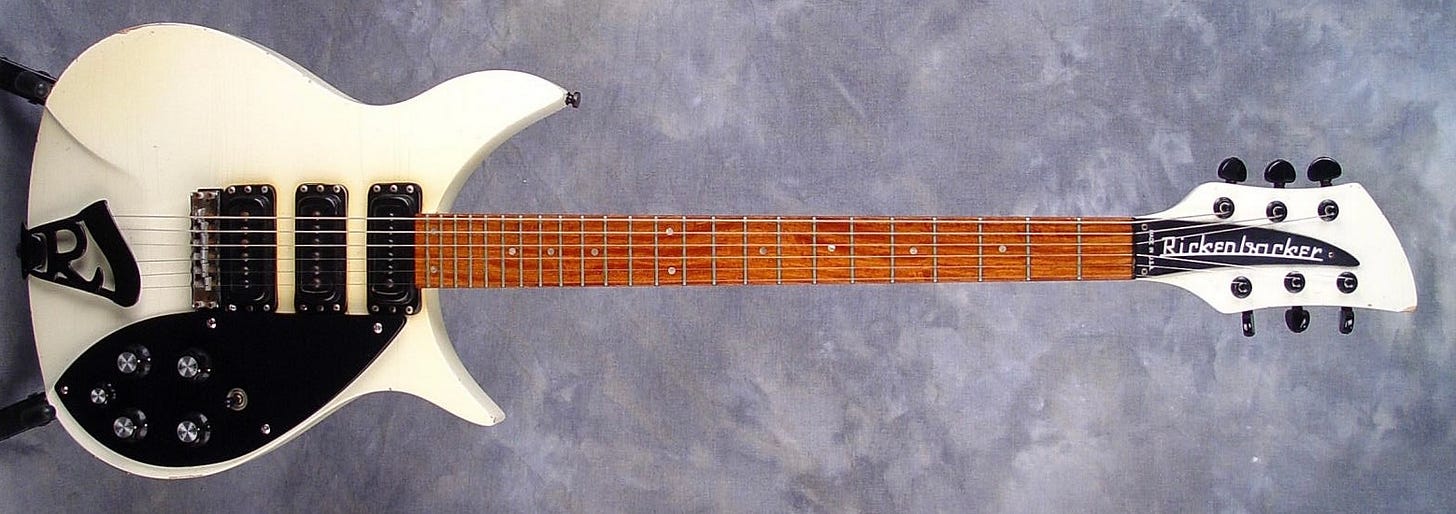
All standard colors were added to the palette, including colors that featured the new-for-1985 Black Hardware/Black Trim look.
Fun fact: even though Schaller was now Rickenbacker’s primary tuner supplier, BH/BT guitars produced until early 1986 featured black Grover Rotomatic tuners as Schaller did not yet offer a black M6 mini.
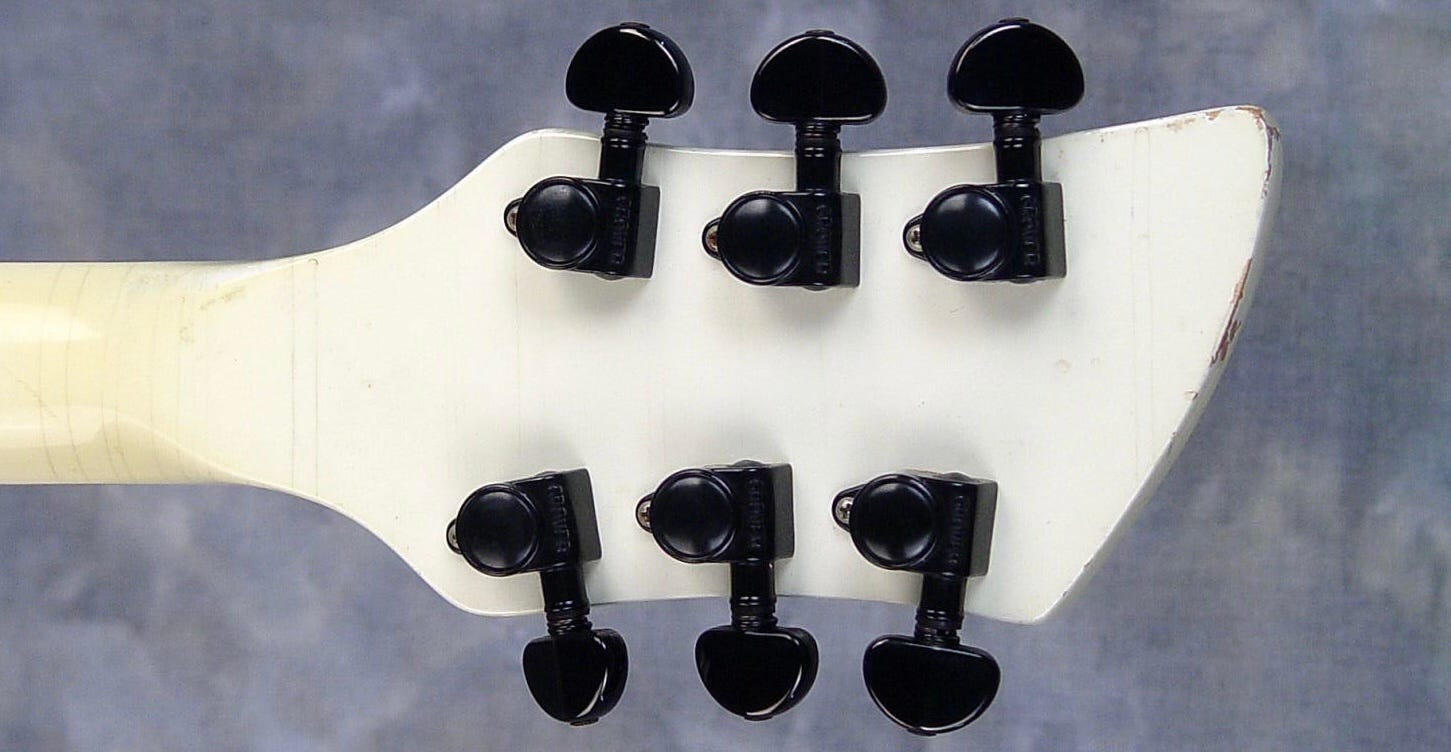
1986
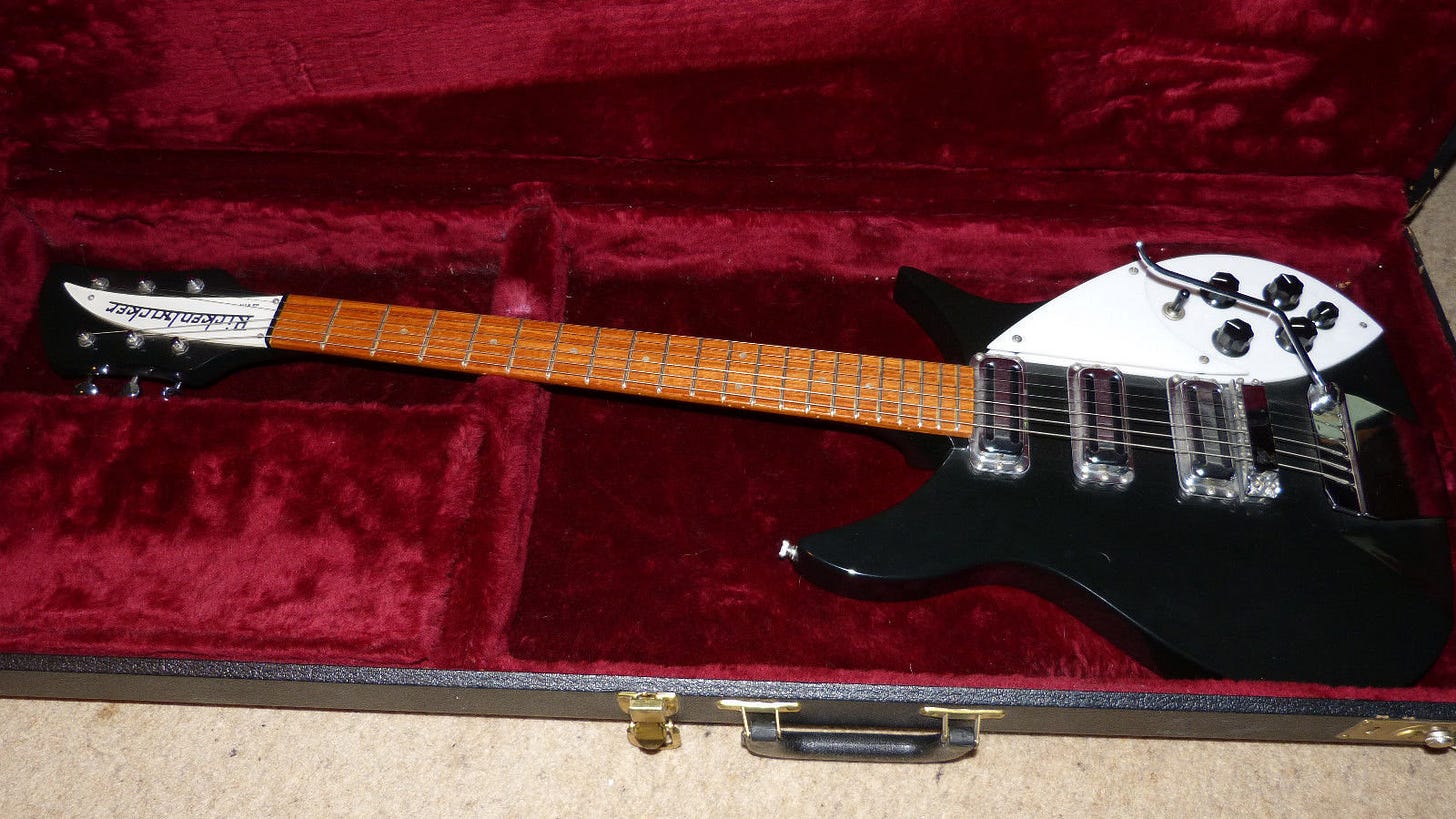
While the 350 Liverpool was unchanged, in June the first prototypes of what would become the 350V63 were built. These featured a 21 fret neck, three toaster pickups, an Accent tailpiece, and a paddle headstock with Schaller “S Deluxe” Kluson-style tuners.
1987-1988
No changes to the production 350 Liverpool, but more prototypes/development guitars were built to support the upcoming 350SH and 355JL Signature Limited Edition models. The 350SH was previewed at the 1988 Summer NAMM show.
1989
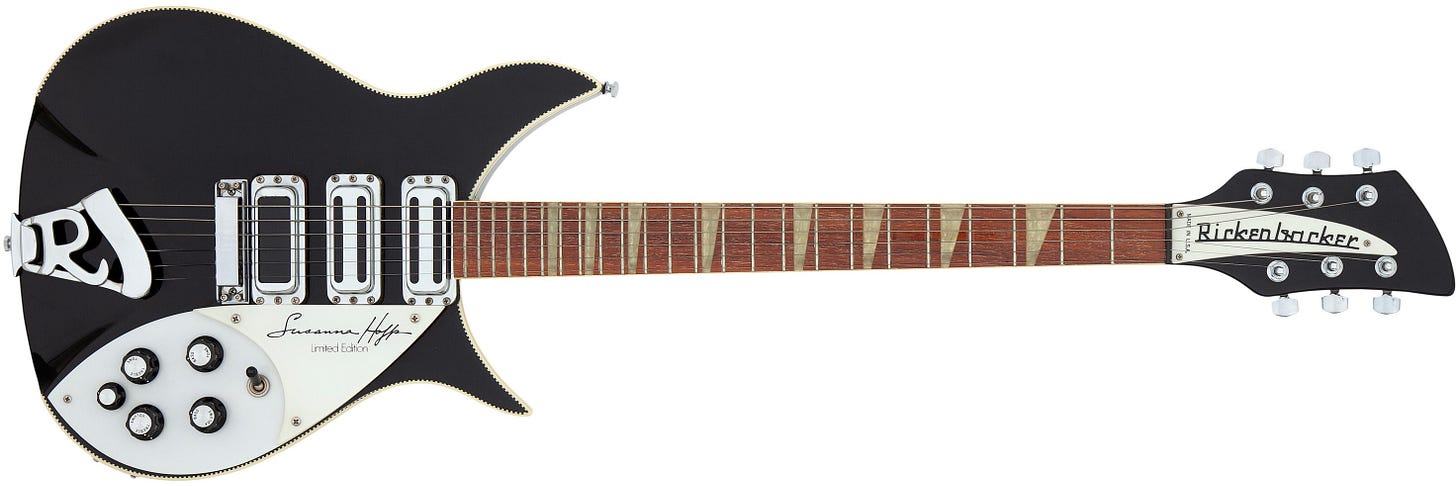
The 350SH Susanna Hoffs Signature Limited Edition began shipping in February. Based on the 350 Liverpool, it features checkered back and front binding, a bound neck with full width acrylic triangle inlays, “12k/hot” toaster pickups in the neck and middle positions and an HB-1 humbucker at the bridge. 250 would be produced between 1989 and early 1991.
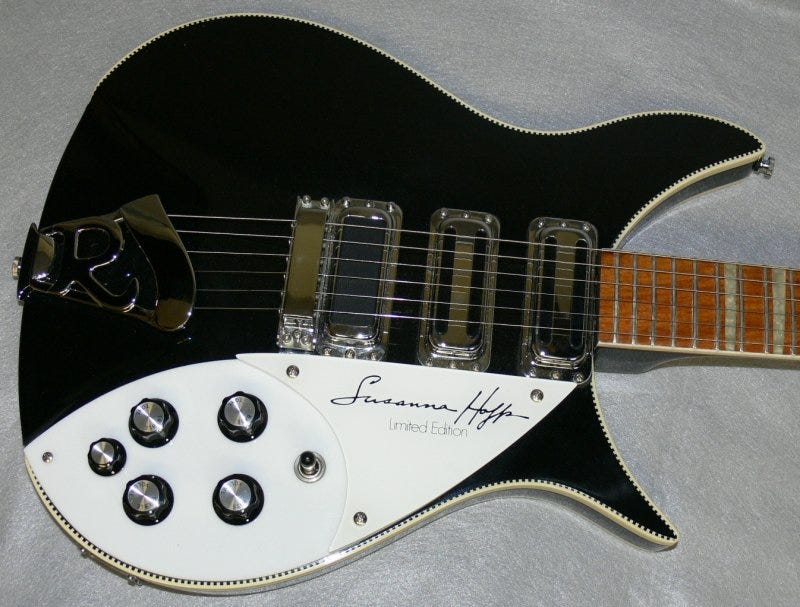
1990
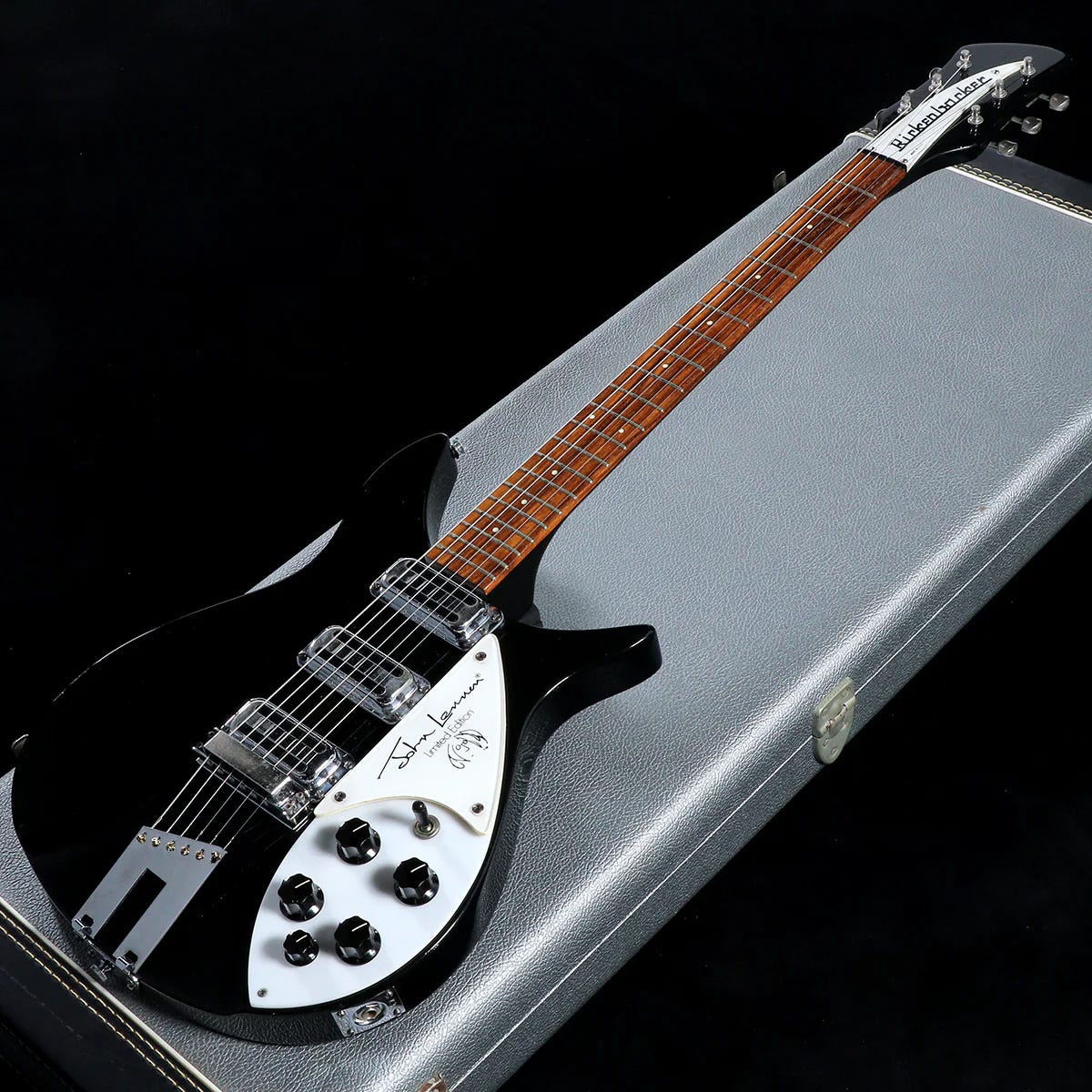
In January the John Lennon Signature Edition series was announced, with 3 guitars inspired by his 1964 325: the 325JL, the 355JL, and the 355/12JL. Bear in mind that the 350/355 did not exist during Lennon’s lifetime.
Production began on the 355JL in May, and it was a dramatically different guitar from the 350 Liverpool. The 355JL featured a 21 fret neck with a square heel instead of the 350 Liverpool’s 24, three period “12k/hot” toaster pickups, a trapeze tailpiece, and a “vintage” skinny headstock with a white plexi TRC and Schaller “Ric Deluxe” vintage Kluson-style tuners.
To maintain the scale length with three fewer frets and the same neck connection point, the neck blank was shortened and the bridge was moved backwards. Consequently there is more space between the bridge and the neck, leaving more space between the pickups than on the 350 Liverpool, or indeed the 325 that inspired the 350 in the first place.
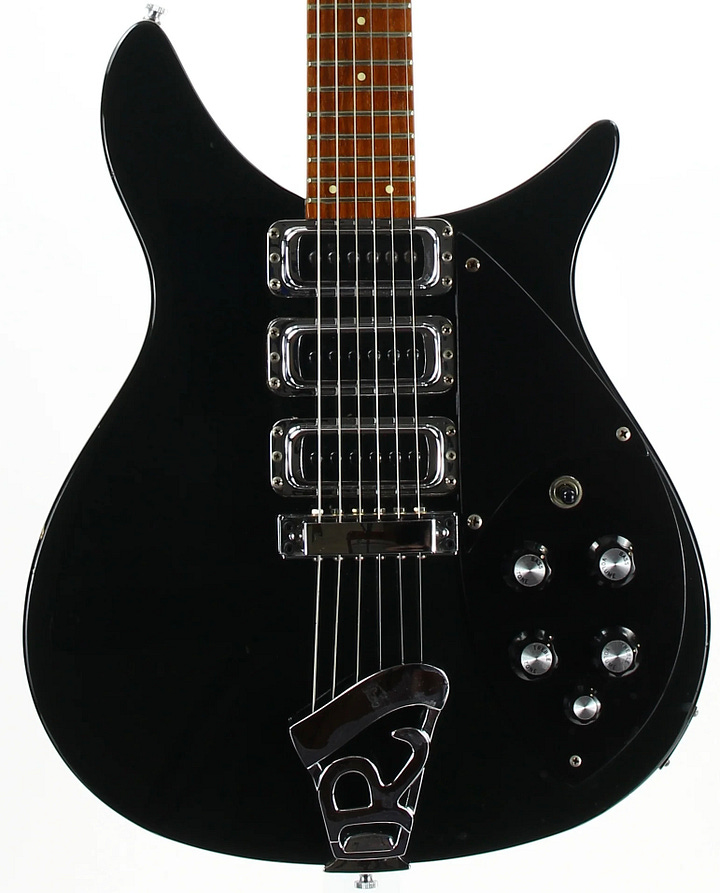
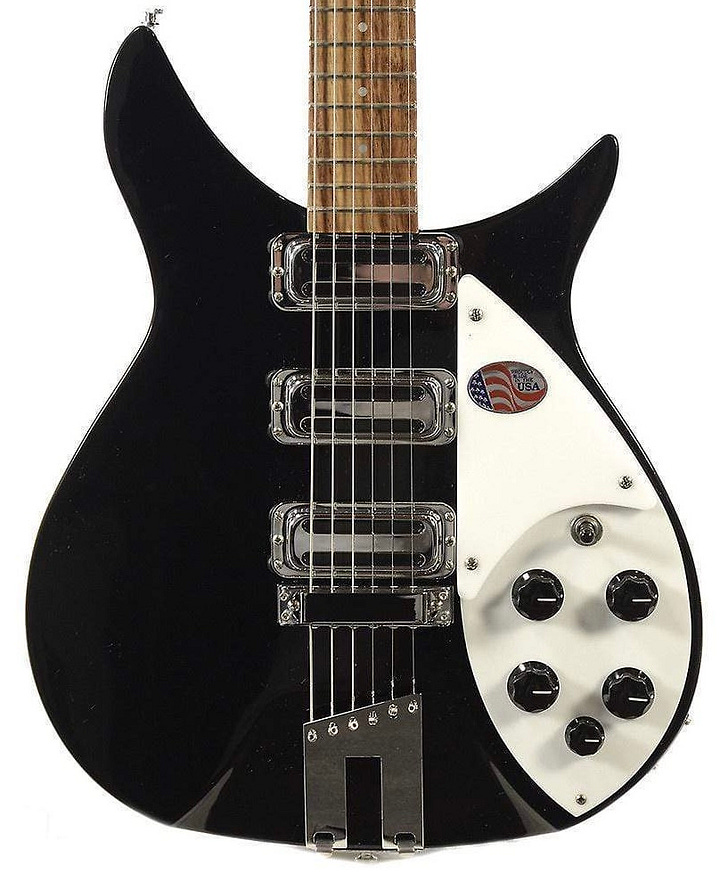
1991
350SH production ended around late February/early March. Production continued on the standard 350 Liverpool and the 355JL throughout the year, and in June production began on the 355/12JL.
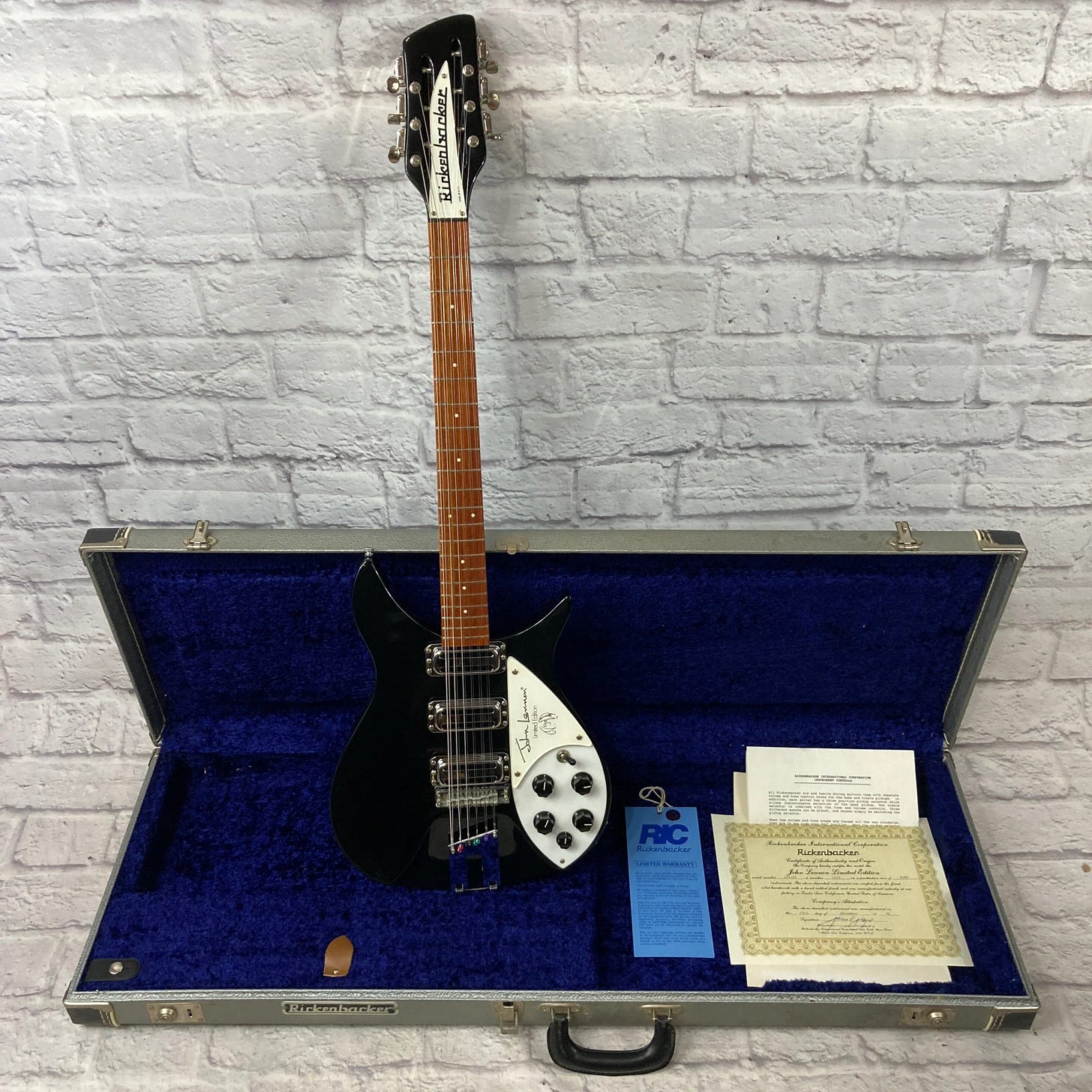
A 355JL with a 12 string neck, the 355/12JL was the first “new” 12-string guitar since the 1960s. Production on the 355JL and 355/12JL would continue until July 1993 when the 2000 unit John Lennon series was completed.
A minor change to all Higain equipped guitars—including the 350–occured around August. A new dual-use pickup bobbin was introduced for use on both Higain and toaster pickups—ending the “fiberboard” button-top Higain era. Click HERE to learn more about how to identify Higain pickups.
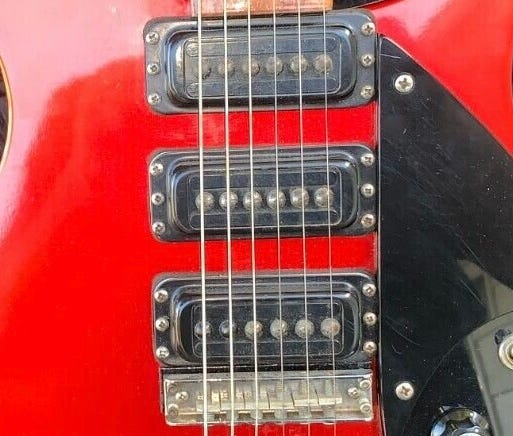
1994
The 355JL and 355/12JL were rechristened the 350V63 and 350/12V63 and added to the price list/catalog as part of the Vintage Reissue line—despite being neither Vintage nor a Reissue. The 350V63 and 350/12 would have the same specifications as the Lennon Signature Limited Editions apart from the signature pickguard.
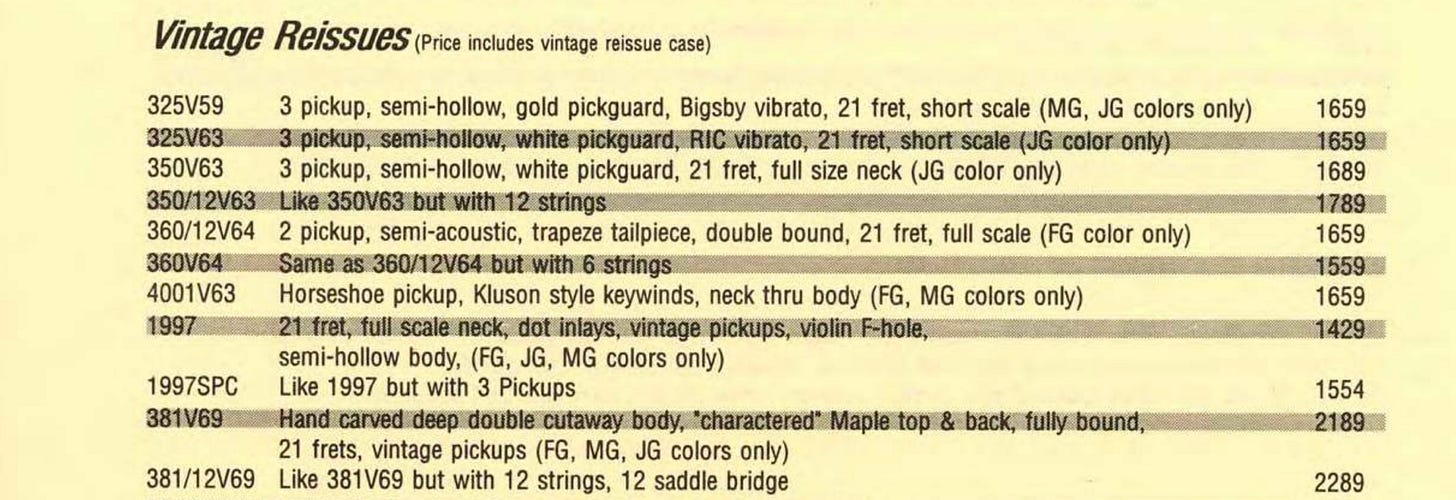
Like the JL models, they were available in Jetglo only. A handful of these guitars were sold in late 1993, and were likely JL overruns.
The 350 Liverpool and 350V63 would be offered side by side through 1995.
1996
The 24 fret 350 Liverpool was dropped from the pricelist in January. Production continued through September—probably to satisfy backorders, but the original 24 fret 350 was officially no more by the end of the year
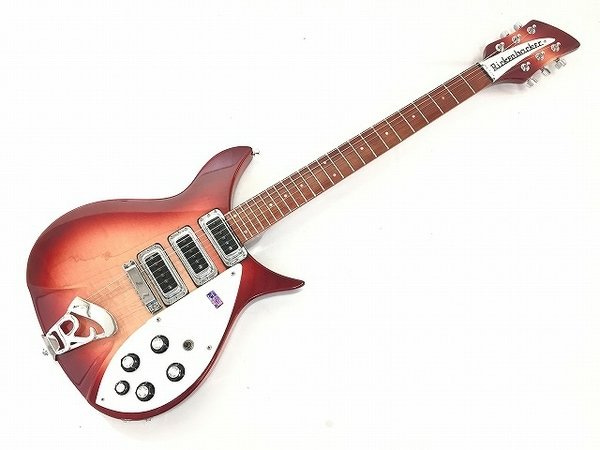
The color palette of the V63 models was expanded with Mapleglo and Fireglo being added.
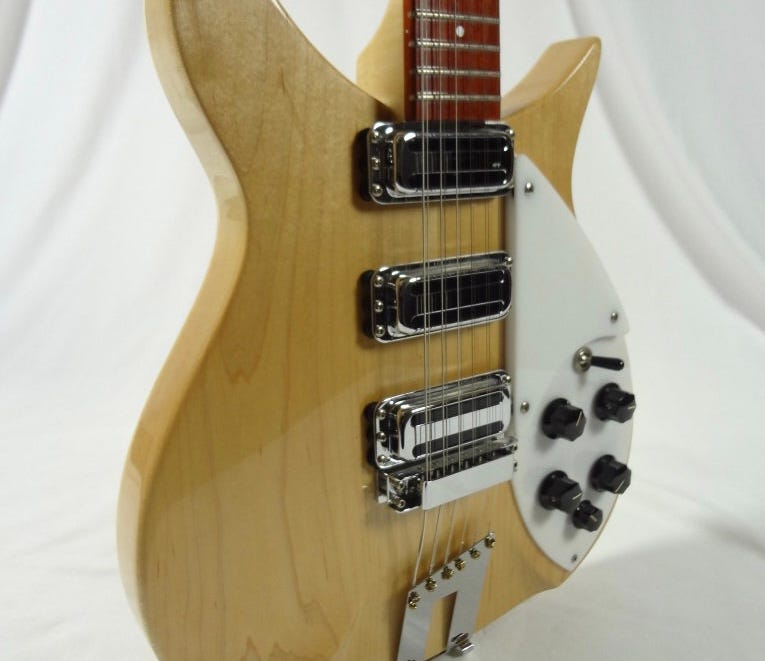
While new colors would be added and removed from the color chart over the next few years, the next change of note would not occur until late 1999.
1997
While no changes occurred to the guitars themselves, the “Liverpool” designation was added to both the 350V63 and 350/12V63 in literature and on the pricelist. It remains in use there to this day.
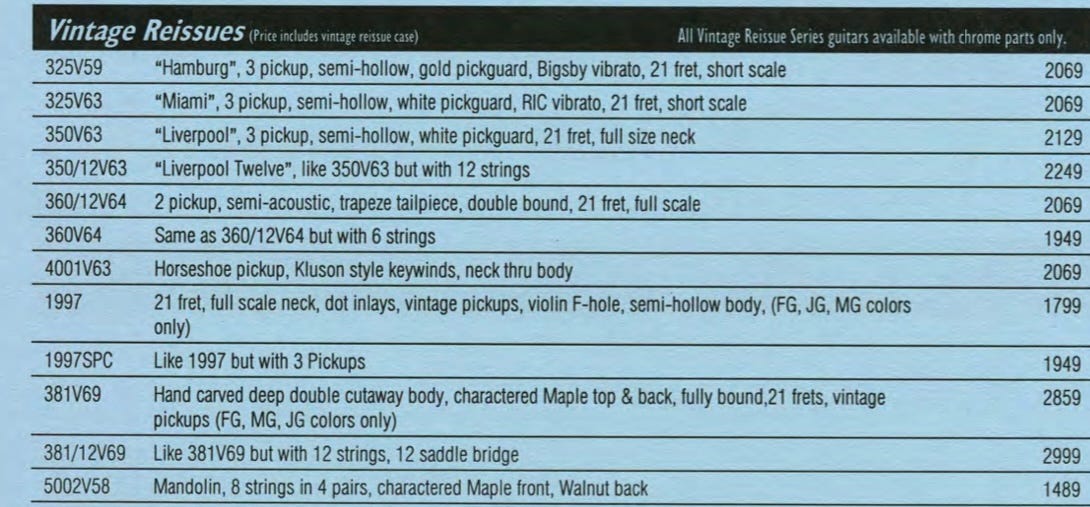
1999
The “12k/hot” toasters that had first appeared in 1984 on the B-Series guitars were replaced by the scatterwound toasters across the entire line. These new pickups were designed to exactly replicate vintage pickups of the 1960s.
The scatterwounds can be easily identified by the screws on the corners that hold the assembly together: the “12k/hot” toasters have Phillips heads, scatterwounds have flathead screws.
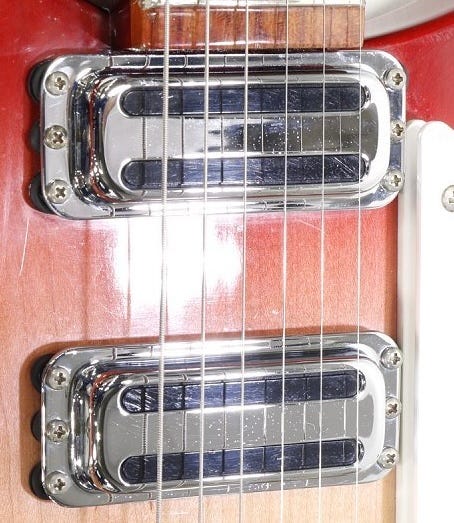
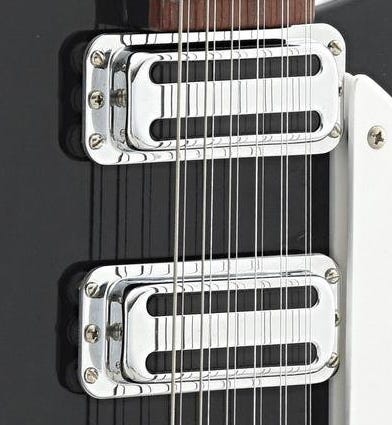
2003
You want a super-obsessive detail? Here’s a super-obsessive detail. In March/April new pickup bobbin tooling incorporated the “injection molding dimple” found on 1963 and earlier pickups in the corners of the toaster slots.

2007
In the first major construction change to the 350V63, the neck was changed from one piece with maple wings to the “standard” semi-hollowbody neck template of three piece maple/walnut/maple with walnut wings. Click HERE to learn more about neck construction.
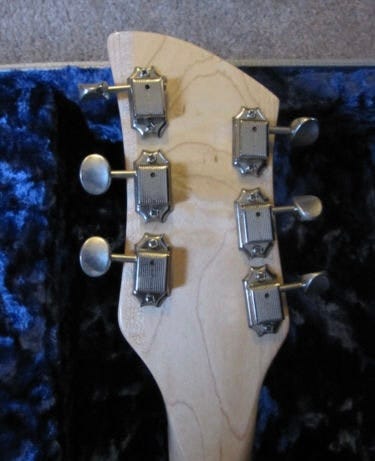

2008
After 14 years of lackluster sales, the 350/12V63 was dropped from the pricelist. Final production runs to fill backorders completed in June/July 2009.
2013
You will find several references to a 2013 special run for Japan that featured a “1 o’clock” f-hole (click HERE to learn more about f-hole orientation) and an Accent vibrato. While I have not been able to conclusively prove this is true, I have seen enough to declare it “probably true”. If so, these are the only known 350s to leave the factory with an f-hole—or indeed a soundhole of any type (apart from a couple of well documented one-offs like the Henry McGuinn 350/12). If you find a guitar thus equipped not from 2013 or with a 2 o’clock f-hole it is almost certainly an aftermarket addition.
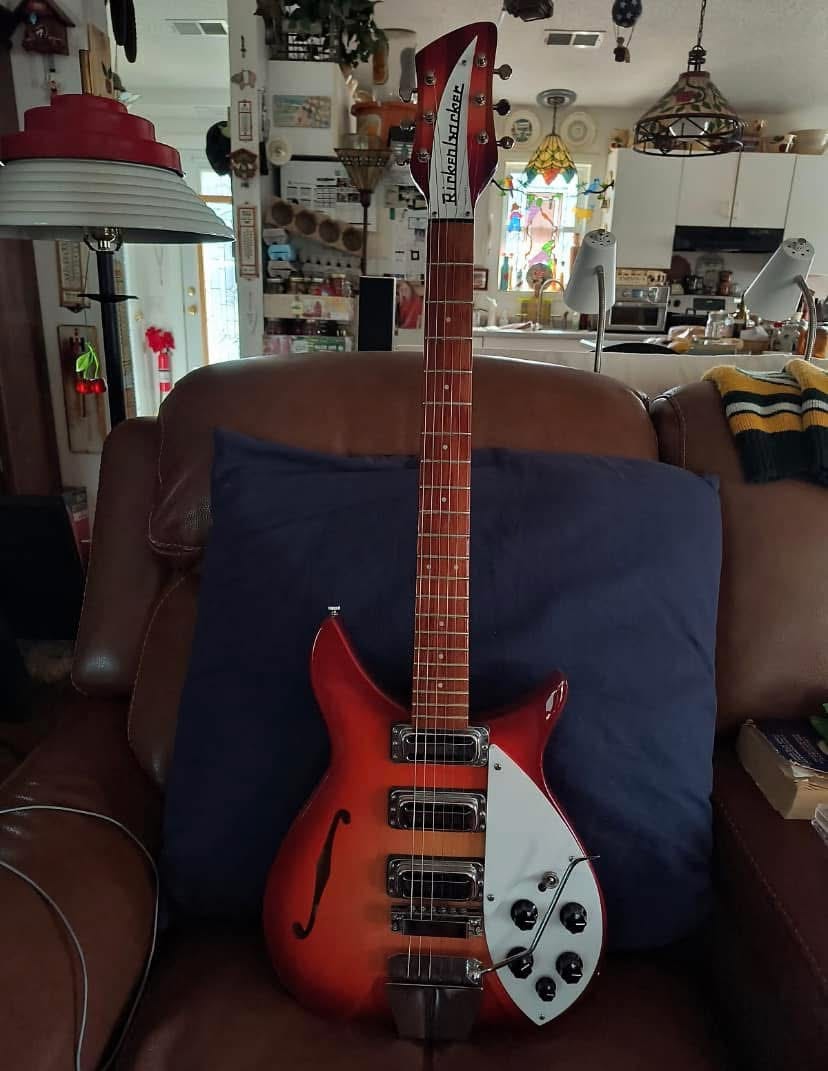
2024
The twin single action truss rods for all non C-Series guitars were replaced by a single, dual action truss rod. The change can only be seen by removing the truss rod cover.
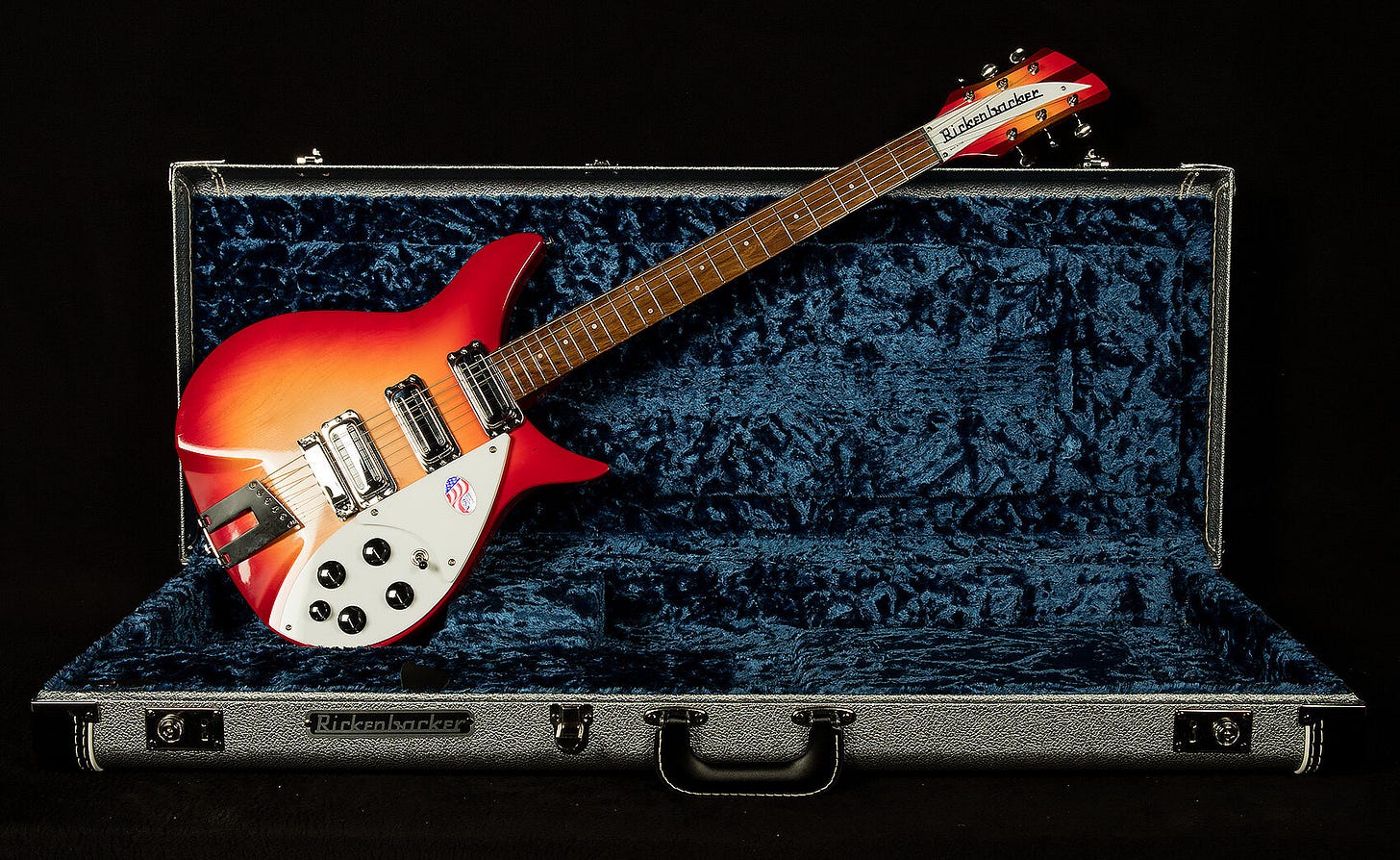
And that, I believe, covers all the significant steps in the evolution of the 350. There have been some minor changes not covered—like the Ric Deluxe tuner supplier has changed, but those are not outwardly visible. If I’ve missed any details or gotten them wrong, let me know and I will add/correct!




Great article Andy! I love the design because of the lightness of the semi hollow body and the small size of it. I’ve got five of these including two 12 string versions
Wow. Terrific.